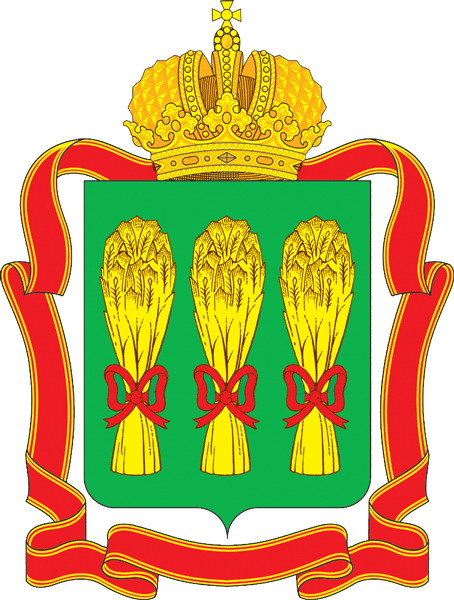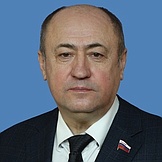Regional flags and emblems


PROFILE
Established 4 February 1939
Capital Penza
The Penza Region is part of the Volga Federal District
Area 43,400 sq km
Population 1 226 000 (2025)
Ethnic groups
(2020 National Census, %)
Russian – 87,57
Tatar – 6,44
Mordva – 2,46
Other – 3,53
Administrative divisions (2024)
Municipal districts – 27
City districts – 3
Rural towns – 24
Rural districts – 264
Geography and climate
The region is located on the western slopes of the Volga Uplands (alt. up to 331 m) in the Middle Volga area; the westernmost part is located in the Oka-Don Lowlands (150–180 m).
The Penza Region stretches 330 km from east to west and 204 km from north to south at its widest points.
It borders on the Republic of Mordovia and the Ulyanovsk, Saratov, Tambov and Ryazan regions.
There are about 330 rivers and several lakes on the floodplains. The area of the Sura Reservoir is 110 sq km and its water volume is 560 mln cu m. The main rivers are the Sura (335 km), the Khopyor (191 km) and the Moksha.
The climate is temperate continental with January temperatures averaging – 8.9°C and July temperatures averaging +19.1°C. Average precipitation in January is 34 mm; average precipitation in July is 73 mm. The frost free period is from 125 days in the north to 139 days in the south.
Vegetation: deciduous and pine forests (oak, ash, linden, maple, mountain elm, birch, aspen, rowan tree, bird cherry and willow) turning into meadow steppe.
Soils: bleached degraded black soils, pale-grey and grey wood soils, meadow-black soils and alluvial soils.
Privolzhsky Les Nature Reserve is located on the watershed between the Volga and the Don. It was established in 1924 to protect northern steppes and timberland. The area of the reserve is 8,373 ha. The land around it is a buffer zone where economic activity is restricted.
Government
The legislative branch is represented by the Legislative Assembly of the Penza Region, which is the permanent, representative and only body of legislative authority in the region.
The Legislative Assembly of the Penza Region has 36 deputies elected for five years, with 18 of them running in single-mandate constituencies and the other 18 in the single electoral district, where winners are identified in proportion to the number of votes cast for lists of deputies nominated by electoral associations.
The current Legislative Assembly was elected in September 2022. Its term expires in September 2027.
The executive branch of the Penza Region is represented by the Governor of the Penza Region, the Government and other executive agencies of the Penza Region.
The Governor of the Penza Region is the region’s highest-ranking official who heads the executive branch and determines the structure of the executive bodies of the Penza Region. The Governor is elected by citizens of the Russian Federation residing in the region for a term of five years. The expiration date for the current Governor is September 2026.
The Government of the Penza Region is the supreme and permanent executive body in the region that heads other executive agencies of the Penza Region. The Prime Minister of the Penza Region heads the Government of the region and organizes its activities.
Economy and natural resources
Industrial production is the leading economic sector in the Penza Region. It includes about 250 large and medium-sized industrial enterprises. Industrial production accounts for 25% of the regional GDP.
Historically, the Penza Region’s specialization has been manufacturing a wide range of machinery and equipment for the power industry, transport, and the oil and gas industry.
Currently, there is brisk growth in machine and tool manufacturing, food products, and timber and pulp production.
The bulk of industrial production consists of food production at about 38%, followed by computers and electronic and optical equipment at about 14%; machinery and equipment not otherwise classified – about 9%; paper and paper products – about 6%; finished metal products – about 6%; electric, electronic and optical equipment – about 4%; and other non-metal mineral products – about 5%.
In the tool engineering and defence industries 17 plants specialize in developing and manufacturing items for the nuclear power industry, radio and communications equipment, automated management systems and their elements.
The machine-building industry includes over 60 large and medium-sized companies. Among the most important machinery items produced are chemical equipment and industrial isolation valves, diesel engines and diesel generators, compressors, turbo compressors and pumps, auto parts, tank trucks and special purpose vehicles, information measuring systems, automation aids and safety controls for technical processes in railroad transport and the nuclear power industry, agricultural equipment and farm machinery. The largest plants in the industry are the M.V. Protsenko “Start” Industrial Group, Penzadieselmash, Radiozavod, Research Institute for Physical Measurements, Rubin, Zavod GRAZ, the Serdobsky Machine-Building Plant and others.
Successfully growing industries in the Penza Region include pulp and paper production, wood processing and woodware production. Among the most important items produced are wallpaper, base paper for furnishing print, base paper for making decorative film, base paper for paper laminate, cardboard, school exercise books, corrugated packaging, plywood, furniture, particle board and others.
The company Biosintez makes medications and medicinal materials. It produces and ships over 200 medications for various purposes not only to Russia but to the CIS countries and abroad.
The food industry makes confections, dairy products, cheese, sausages, semi-finished meat products, poultry, sugar, bread and cereals, soft and alcoholic drinks, beer and other.
The consumer goods industry produces nonwoven fabric, cloths for various industries, clothes for children and adults, knitwear, shoes and safety footwear, leather accessories (bags, suitcases) and more.
The main construction materials produced by the region’s enterprises include cement, sand-lime bricks, porous concrete, steam-cured gas-concrete blocks, reinforced concrete products and structures, dry building mixes, glass and crystalware, and more.
Natural resources in the Penza Region include construction minerals and also small oil reserves in the town of Kuznetsk and the Kameshkirsky District.
Agriculture is based on grain crops and livestock. Most of the Penza Region is tilled soil: 85 percent of the land is arable. The climatic conditions are favourable for growing vegetables, beets, sunflowers, onions and potatoes. The region has potential to expand food production to supply large cities in the Volga and Central Federal districts, but due to inefficient marketing and processing systems, farms in the region are mostly limited to selling to local consumers so far.
Culture and tourism
History lovers should not miss Tarkhany, the house – now a museum – where the great Russian poet Mikhail Lermontov spent half of his life and where his remains are now. The estate has a number of features typical of the early 19th century, including the manor house, church, park, ponds and the Arseniyev-Lermontov family cemetery. Some of the great poet’s personal belongings are also on display. The museum regularly holds themed tours, literary evenings and folk festivals.
The town of Belinsky, named for the well-known literary critic, is also worth visiting. Its stock of late 18th century houses has partially survived. The Belinsky family wooden house, which is now a museum, boasts an extensive collection of the great critic’s life and work.
For those interested in traditional crafts, there is the impressive museum of crystalware and artistic glassware in Nikolsk. The museum displays works by well-known artisans, including items made with Venetian fibre by the prominent artisan Vertuzayev, samples of glassware from Bohemia and the Czech Republic, and the best examples of local glasswork.
The Zolotaryovka Settlement Museum is a collection of archaeological sites that are used to shed light on the history of the construction of the ancient fortress and its fortifications, people’s everyday lives, their trades and crafts, weapons and armour. The Zolotaryovka Settlement is a unique landmark of medieval history. This former settlement near the upper reaches of the Sura River is the site of a battle between defenders of the fortress and Tatar-Mongol troops.
Privolzhsky Les Nature Reserve has an ecosystem unmatched in the world, its soils are recognised as the gold standard of meadow soils, and its plant life includes many rare and vanishing species. Its total area is 8,374 ha of zonal meadow steppe but the reserve’s grounds are clustered, with the different sections located rather far from each other.
The Penza Region offers excellent hunting opportunities, with four million hectares of hunting land.


